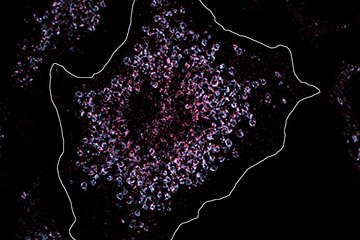Limited variety of genes
International study provides a blueprint for disease surveillance in plants
At an unprecedented scale, researchers have now catalogued the array of surveillance tools that plants use to detect disease-causing microbes across an entire species. Representing a major advance for plant biology, the findings have important implications for the management of dangerous crop diseases which represent significant threats to food security. Like animals, plants rely on immune systems to help them respond to attack by pathogenic microbes such as bacteria and fungi. A crucial layer of the immune system is formed by proteins called Nucleotide-binding Leucine-rich Repeat receptors (NLRs), which work together in combinations to detect the ever-changing array of microbes in the environment.

Despite progress in understanding how these receptors work together, key questions remained; what is the full spectrum of NLRs produced by plants? How much variation in NLRs is there in a typical plant species? What range is needed for plants to protect themselves?
An international team supported by the 2Blades Foundation through a grant from the Gordon and Betty Moore Foundation set out to piece together the NLR repertoire in Arabidopsis, a member of the mustard family. The effort was carried out in the laboratories of Detlef Weigel, at the Max Planck Institute for Developmental Biology in Germany, Jeffery Dangl, of the Howard Hughes Medical Institute and the University of North Carolina, and Jonathan Jones at The Sainsbury Laboratory in the United Kingdom. Researchers from the University of Bath, Colorado State University, and the Center for Research in Agricultural Genomics (Barcelona) also contributed to the study, which is published today in the journal Cell.
The team sampled Arabidopsis plants, which come under attack by pathogens of all stripes, from populations across Europe, North America, and Asia. Using state-of-the-art sequencing technologies, they analyzed the genetic diversity of the plants’ NLRs. They found, as anticipated, that NLR repertoires in plants differed between locations, likely due to different evolutionary pressures from regional pathogens. But the team was surprised to find an upper limit on NLR gene numbers across the species.
A reference sequence is not sufficient

As Weigel described the findings, “While the diversity is perhaps more limited than anticipated, it is the mixing of genes that makes each individual uniquely resistant to a different spectrum of pathogens.”
The study will also change the way researchers approach the subject in future, says Jones.
“One of the remarkable conclusions that emerge from this study is that so many populations need to be sequenced to define the full immune system repertoire of any plant,” he said. “Gone are the days when a single reference sequence is sufficient to reveal the secrets of a species; it is now clear that we need to understand the genetic diversity of a species in order to understand its immune system.”
Development of disease-resistant plants
The research has major implications for our understanding of agriculture and plant evolution. “This work will help drive new NLR receptor function discovery for developing disease-resistant crops and also guide the analysis of their evolution across the plant kingdom,” said Dangl.
Coordination and support for the study was provided by the 2Blades Foundation, an international organization dedicated to understanding plant disease and advancing durable crop disease resistance. Through its programs, 2Blades has already demonstrated in field trials that protection against serious unmanaged diseases can be expanded in crops by introducing resistance genes from related plant species. The fundamental knowledge of NLRs from the study will further inform strategies in its on-going programs, as well as the field of plant-microbe interactions at large. This study was funded in part by the Gordon and Betty Moore Foundation through Grant GBMF4725 to the 2Blades Foundation.













